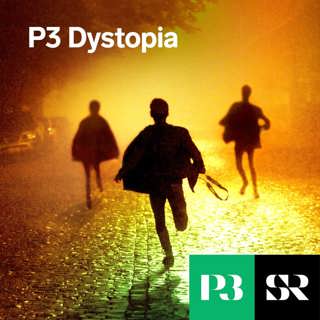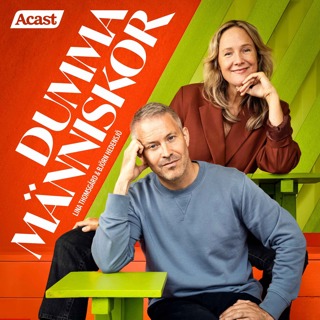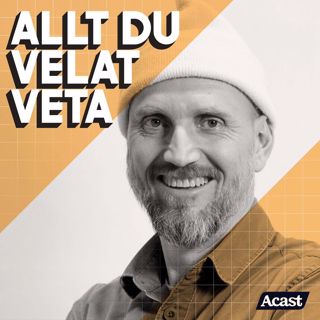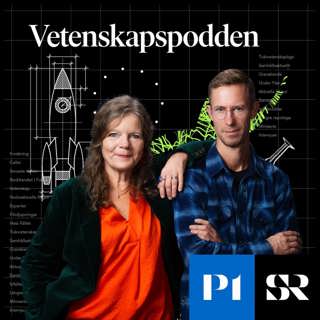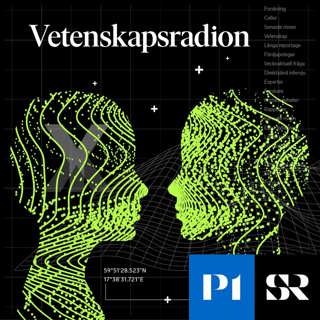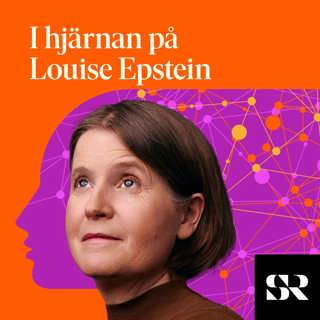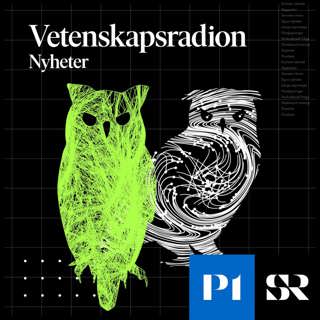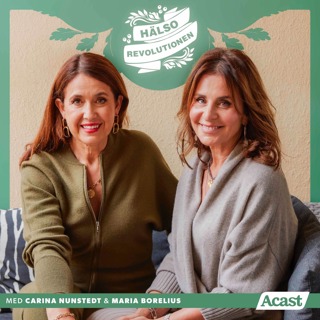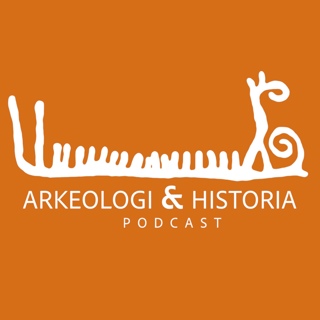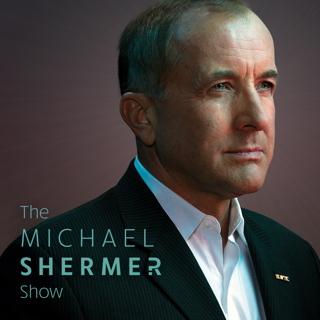
16. Dr. Robert Trivers — Evolutionary Theory & Human Nature
Dr. Robert Trivers and Dr. Michael Shermer have a lively conversation on everything from evolutionary theory and human nature to how to win a knife fight and Trivers’ membership in the Black Panthers. Don’t miss this engaging exchange with one of the most interesting scientists of the past half century.
16 Nov 201749min

15. Donald Prothero & Timothy Callahan — UFOs, Chemtrails, and Aliens: What Science Says
UFOs. Aliens. Strange crop circles. Giant figures scratched in the desert surface along the coast of Peru. The amazing alignment of the pyramids. Strange lines of clouds in the sky. The paranormal is alive and well in the American cultural landscape. In UFOs, Chemtrails, and Aliens, Don Prothero and Tim Callahan explore why such demonstrably false beliefs thrive despite decades of education and scientific debunking. Employing the ground rules of science and the standards of scientific evidence, Prothero and Callahan discuss a wide range of topics including the reliability of eyewitness testimony, psychological research into why people want to believe in aliens and UFOs, and the role conspiratorial thinking plays in UFO culture. They examine a variety of UFO sightings and describe the standards of evidence used to determine whether UFOs are actual alien spacecraft. Finally, they consider our views of aliens and the strong cultural signals that provide the shapes and behaviors of these beings. While their approach is firmly based in science, Prothero and Callahan also share their personal experiences of Area 51, Roswell, and other legendary sites, creating a narrative that is sure to engross both skeptics and believers.
15 Okt 20171h 7min

14. Dr. Nancy Segal — Twin Mythconceptions: False Beliefs, Fables, and Facts about Twins
Dr. Nancy Segal, the world’s leading expert on twins, has a new book that sheds light on over 70 commonly held ideas and beliefs about the origins and development of identical and fraternal twins. Using the latest scientific findings from psychology, psychiatry, biology, and education, Dr. Segal separates fact from fiction. Each idea about twins is described, followed by both a short answer about the truth, and then a longer, more detailed explanation. Coverage includes embryology of twins, twin types, intellectual growth, personality traits, sexual orientation of twins, marital relationships, epigenetic analyses, the frequency of different twin types and the varieties of polar body twin pairs. This book, and Salon with Dr. Segal, will inform and entertain behavioral and life science researchers, health professionals, twins, parents of twins, and anyone interested in the fascinating topic of twins and what they can teach us about human nature. Dr. Segal earned her Ph.D. in the Social Sciences and Behavioral Sciences from the University of Chicago. From 1982-1991 she was a post-doctoral fellow and research associate at the University of Minnesota, affiliated with the well-known Minnesota Study of Twins Reared Apart. She is currently Professor of Psychology at CSU Fullerton and Director of the Twin Studies Center, which she founded in 1991. Dr. Segal has authored over 200 scientific articles and book chapters, as well as several books on twins. Her previous book, Born Together-Reared Apart: The Landmark Minnesota Twin Study (2012, Harvard University Press) won the 2013 William James Book Award from the American Psychological Association. Her other books include Someone Else’s Twin: The True Story of Babies Switched at Birth (2011), Indivisible by Two: Lives of Extraordinary Twins (2007) and Entwined Lives: Twins and What They Tell Us About Human Behavior (2000). She is the 2016 recipient of the Wang Family Excellence Award from the California State University administrators and trustees for “exemplary contributions and achievement.” She was recognized as CSUF’s Outstanding Professor of the Year in 2005 and as the Distinguished Faculty Member in Humanities and Social Sciences in 2007 and 2014. She has been a frequent guest on national and international television and radio programs, including the Martha Stewart Show, Good Morning America, the Oprah Winfrey Show and The Forum (BBC). Dr. Segal has variously served as a consultant and expert witness for the media, the law and the arts.
17 Sep 201754min

13. Dr. Walter Scheidel — The Great Leveler: Violence and the History of Inequality from the Stone Age to the 21st Century
Are mass violence and catastrophes the only forces that can seriously decrease economic inequality? To judge by thousands of years of history, the answer is yes. Tracing the global history of inequality from the Stone Age to today, the Stanford University historian Walter Scheidel shows that inequality never dies peacefully. Inequality declines when carnage and disaster strike and increases when peace and stability return. The Great Leveler is the first book to chart the crucial role of violent shocks in reducing inequality over the full sweep of human history around the world. Ever since humans began to farm, herd livestock, and pass on their assets to future generations, economic inequality has been a defining feature of civilization. Over thousands of years, only violent events have significantly lessened inequality. The “Four Horsemen” of leveling—mass-mobilization warfare, transformative revolutions, state collapse, and catastrophic plagues—have repeatedly destroyed the fortunes of the rich. Scheidel identifies and examines these processes, from the crises of the earliest civilizations to the cataclysmic world wars and communist revolutions of the twentieth century. Today, the violence that reduced inequality in the past seems to have diminished, and that is a good thing. But it casts serious doubt on the prospects for a more equal future. An essential contribution to the debate about inequality, The Great Leveler provides important new insights about why inequality is so persistent—and why it is unlikely to decline anytime soon.
11 Juni 201757min

12. Derren Brown — Magic, Happiness, and Skepticism
In this remote Science Salon, Michael Shermer talks with Derren Brown, a British magician and writer. His TV show Derren Brown: Mind Control received immediate success after airing in 2000. His specials include Russian Roulette, Seance, The Heist, Hero at 30,000 Feet, How to Predict the Lottery, and Apocalypse. His live shows Something Wicked This Way Comes and Svengali have won him two Olivier Awards. He garnered the 2012 BAFTA for Best Entertainment for Derren Brown: The Experiments. He has also penned the books Tricks of the Mind and Confessions of a Conjuror, which have sold over 700,000 copies worldwide. His latest book is Happy: Why More or Less Everything is Absolutely Fine. Derren is currently in the US for his off-Broadway show Secret (April 21st – June 25th, 2017), which has already sold out and has been extended with additional dates. Derren Brown makes his American theatrical debut in this world premiere production at Atlantic Theater Company. New York audiences can experience Derren’s unique blend of mind-reading, suggestion and psychological illusion in a brand new theatrical experience.
15 Maj 20171h 16min

11. Dr. Andrew Shtulman — Scienceblind: Why Our Intuitive Theories About the World Are So Often Wrong
Why do we catch colds? What causes seasons to change? And if you fire a bullet from a gun and drop one from your hand, which bullet hits the ground first? In a pinch we almost always get these questions wrong. Worse, we regularly misconstrue fundamental qualities of the world around us. In Scienceblind, cognitive and developmental psychologist Dr. Andrew Shtulman, a professor of psychology and cognitive science at Occidental College, where he directs the Thinking Lab, shows that the root of our misconceptions lies in the theories about the world we develop as children. They’re not only wrong, they close our minds to ideas inconsistent with them, making us unable to learn science later in life. So how do we get the world right? We must dismantle our intuitive theories and rebuild our knowledge from its foundations. The reward won’t just be a truer picture of the world, but clearer solutions to many controversies—around vaccines, climate change, or evolution—that plague our politics today.
23 Apr 20171h 15min

10. Dr. Carol Tavris — Mistakes Were Made (But Not by Me)
Why is it so hard to say “I made a mistake”—and really believe it? Social psychologist Dr. Carol Tavris, one of the most influential thinkers and writers of our time, explores in dialogue with Michael Shermer cognitive dissonance and what happens when we make mistakes, cling to outdated attitudes, or mistreat other people—we must calm the cognitive dissonance that jars our feelings of self-worth. And so, unconsciously, we create fictions that absolve us of responsibility, restoring our belief that we are smart, moral, and right—a belief that often keeps us on a course that is dumb, immoral, and wrong. Backed by years of research, Mistakes Were Made (But Not by Me) offers a fascinating explanation of self-justification—how it works, the damage it can cause, and how we can overcome it. The updated edition of the book features new examples and concludes with an extended discussion of how we can live with dissonance, learn from it, and perhaps, eventually, forgive ourselves.
19 Feb 20171h 3min

9. Gary Taubes — The Case Against Sugar
Among Americans, diabetes is more prevalent today than ever; obesity is at epidemic proportions; nearly 10% of children are thought to have nonalcoholic fatty liver disease. And sugar is at the root of these, and other, critical society-wide, health-related problems. With his signature command of both science and straight talk, Gary Taubes delves into Americans’ history with sugar: its uses as a preservative, as an additive in cigarettes, the contemporary overuse of high-fructose corn syrup. He explains what research has shown about our addiction to sweets. He clarifies the arguments against sugar, corrects misconceptions about the relationship between sugar and weight loss; and provides the perspective necessary to make informed decisions about sugar as individuals and as a society. This is a groundbreaking and eye opening expose that makes the convincing case that sugar is the tobacco of the new millennium, backed by powerful lobbies, entrenched in our lives, and utterly addicting, making us all very sick. As Katie Couric says, “This is required reading for not only ever parent, but every American.” Gary Taubes is the New York Times bestselling author of Good Calories, Bad Calories and Why We Get Fat. His writing has appeared in the New York Times magazine, The Atlantic, and Esquire.
22 Jan 20171h 8min



